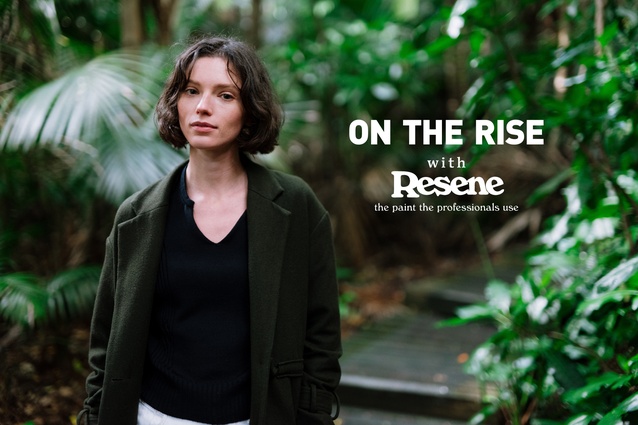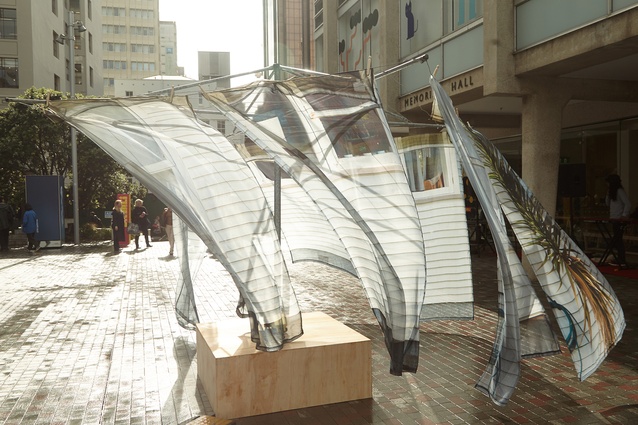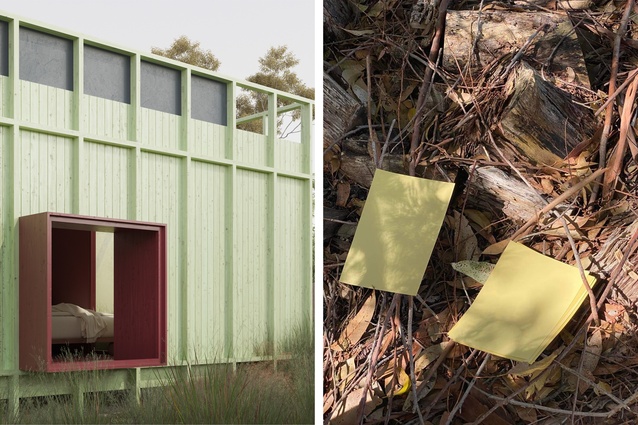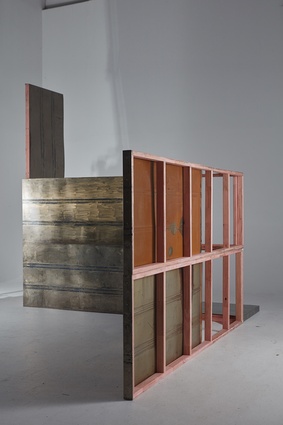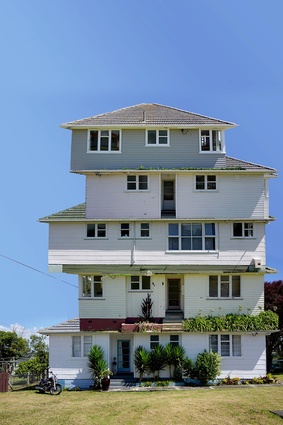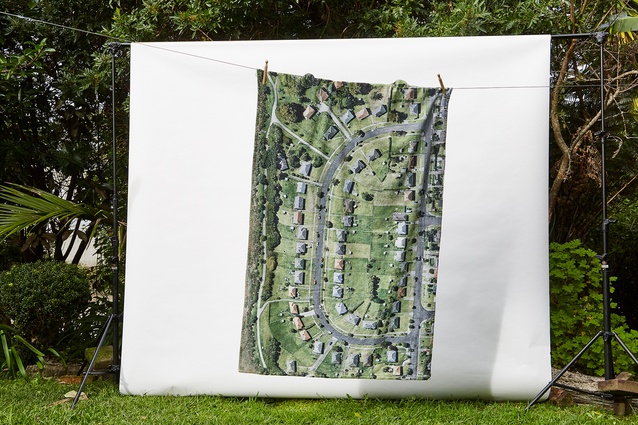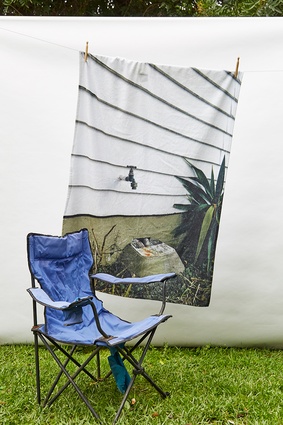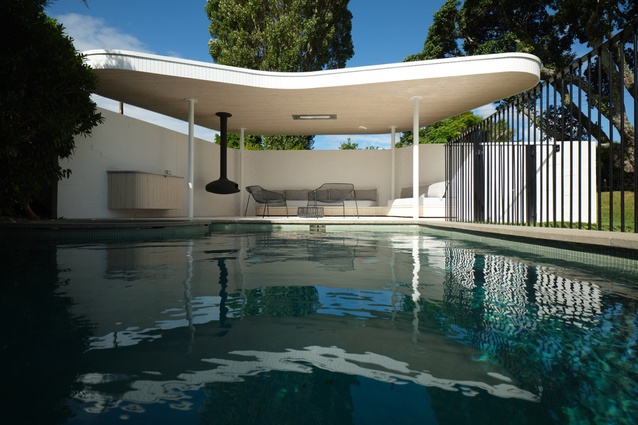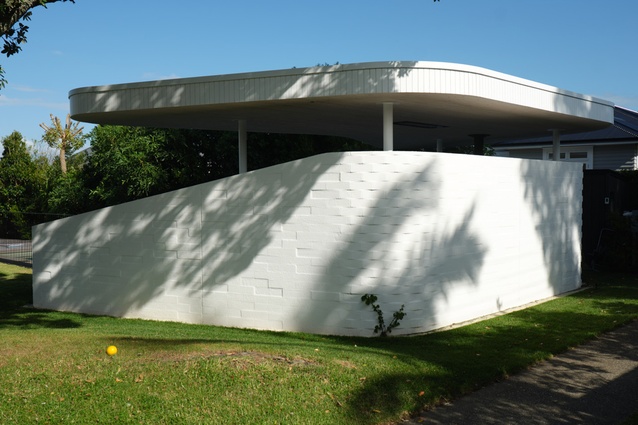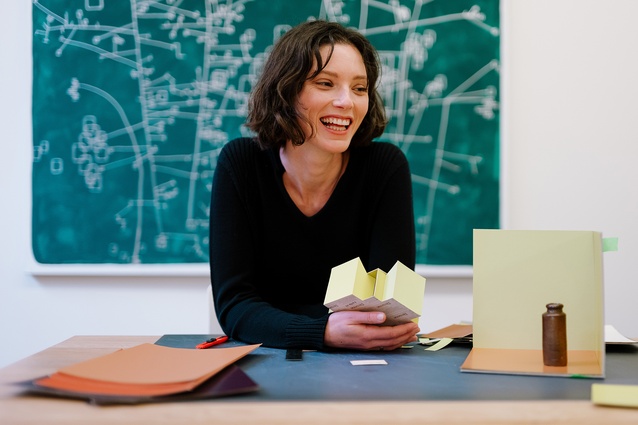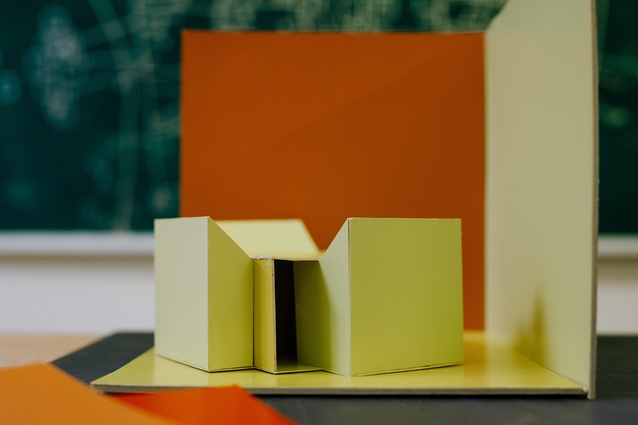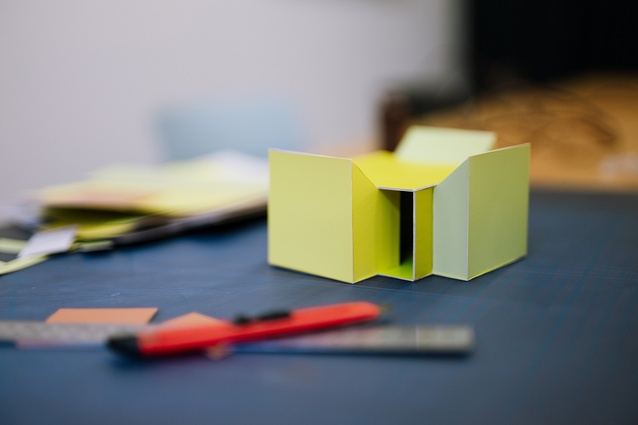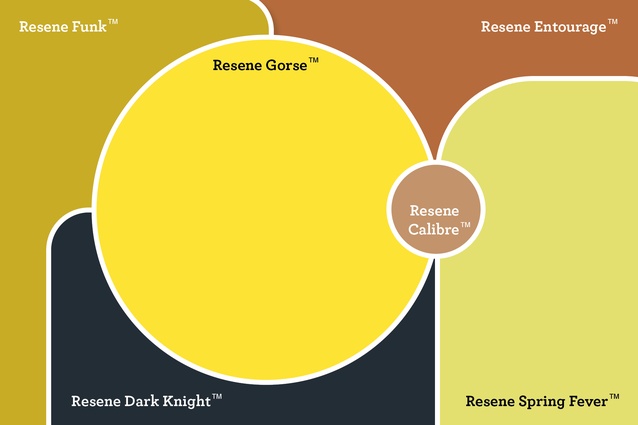On the Rise: Katie Braatvedt
ArchitectureNow’s On the Rise series, supported by Resene, profiles young designers from across the country who are shaping the future of the industry. In this instalment, we talk to graduate architect Katie Braatvedt about her diverse professional background and creative pursuits within the scope of design and architecture.
Jacinda Rogers (JR): You have quite a diverse portfolio of work, having dabbled in set design, spatial design and fashion modelling (to name a few), alongside developing your career in architecture. What keeps you inspired and motivated to experiment as a creative professional?
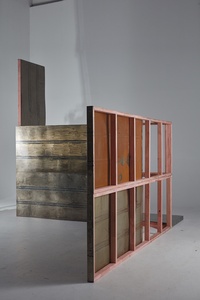
Katie Braatvedt (KB): I’m not super interested in working in isolation, and absolutely cherish any dynamic where collaboration really starts to hum. At the moment, I have a lovely ‘hive-mind’ feeling with Cam Deynzer, and we collaborate whenever we can. When a project is going well, it feels like we’re finishing each other’s sentences — in a creative sense. We love a palette and, for a project we’re working on in Narrawallee, Australia, we did a site visit with a whole bunch of swatches, choosing unexpected colours that responded to the site but felt vibrant rather than ‘earthy’. In terms of what inspires and motivates me, I think inspiration is everywhere! Motivation is harder to come by – sometimes you just need a deadline.
JR: Is there anything related to architecture that you feel passionate about exploring and/or celebrating?
KB: I’m constantly finding myself grappling with the notion of ‘good taste’. I love beautiful things and I think everyone deserves beautiful spaces. I’m interested in untangling beauty from luxury. I’ve recently been contributing to Island Magazine and it’s been an interesting way to explore this notion. I’m much more interested in interviewing people than writing an article, and last year did the first two interviews in what I hope will be a series, on designers photographed in their own homes. The budgets are often a lot lower for a designer’s own house, which leads to a playful and inventive frugality that feels more authentic than the off-the-shelf-luxury aesthetic architects can sometimes revert to. I think nostalgia and delight are to be cherished, and explored with rigour, rather than kitsch or irony. It’s important for people to feel comfortable within buildings, especially houses.
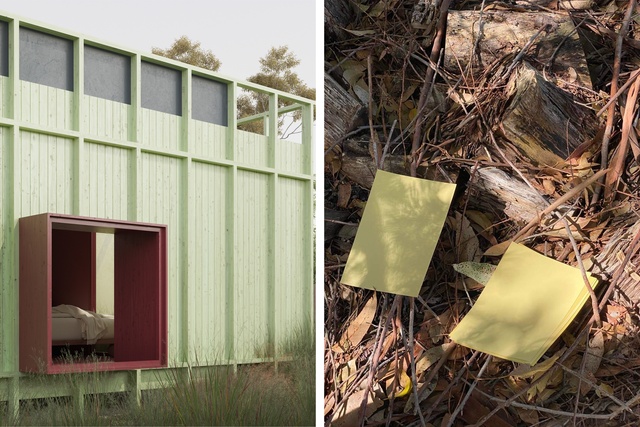
JR: Have those interviews with designers influenced your perspective on the role of the architect in any way?
KB: In the climate crisis, architects need to be valued for their ability to see the potential in spaces. Sometimes there are very subtle and easy moves that can be made – materials that can be salvaged, a lick of paint, some careful planting – that are transformative without the need for too much demolition. In the late 20th century, the industry made it almost impossible to tweak our buildings in this way through the use of materials like asbestos. A shift needs to occur within the Pākehā mindset of ownership – asking how can I build in a way that is robust and beautiful, but where the materials can be reused or adaptable for future uses? How can I honour the land by minimising my footprint? Percentage-based fees are somehow limiting here – clients and architects need to get used to the idea that the overall build size and cost may reduce but the architect’s fee may increase with this type of thinking.
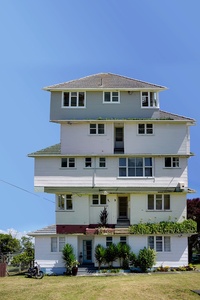
JR: I see you also teach at Auckland University of Technology. What has the experience of tutoring been like for you?
KB: My work at AUT sparks endless joy. During my three years tutoring at AUT, I have wrestled with and clarified my position on architecture. At its best, student work is inventive and unexpected – creativity with optimism and without financial constraint. People often refer to the academic world as somehow separate to the ‘real’ world, which annoys me. The ‘real’ world is based on an arbitrary construct of commerce and social hierarchy, entirely disconnected to the ‘natural’ world. I’m not sure academia is any more or less real than capitalism.
JR: To touch on your time as a student of architecture, tell me a bit about your thesis project.
KB: My thesis (supervised by Dorita Hannah), researched the 1950s state house, which is a cultural icon. I celebrated the history of this incredible typology and the ambitious goal to provide housing for all, while also questioning some of the values it was established on — the quarter acre section, the nuclear family, our reliance on cars… My design project imagined the reuse of these houses as our population densifies and diversifies — would the familiarity of this architecture help us feel more comfortable with density? I had a lot of fun with collage, and made a bunch of beach towels I still use every summer.
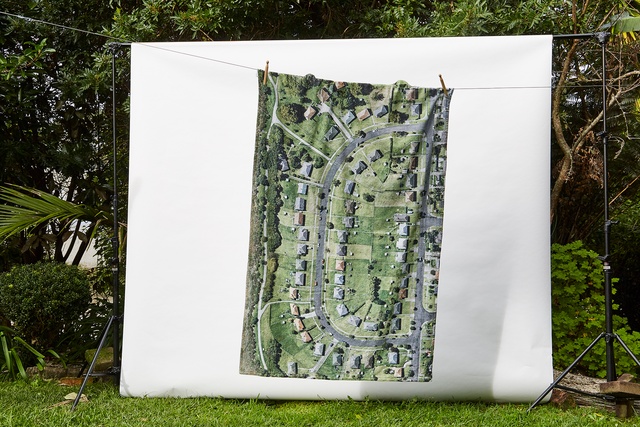
JR: I have to ask, because fashion modelling seems like an exclusive world that not many of us experience, what was this like for you?
KB: Modelling was the most extraordinary ride, it was very formative for me. I travelled all over the world and spent each work day at the centre of a highly collaborative, creative process, with wonderful people. Inevitably, I got to a point where I wanted to get back into my architecture career, which I’d put on pause for a few years. I was still living in New York and was Instagram friends with Jonathan and Sarah from WeShouldDoItAll. They gave me a part-time job contracting for them as a spatial designer. In an instant, I went from feeling haggard at 26 years old, to being relatively young in my field; it’s nice to be in an industry where careers peak in your 50s and 60s. It’s easy to demonise the fashion industry — aspects of it are overtly problematic. However, a lot of people I worked with were grounded and diligent, while still being frivolous and playful in their creative expression.
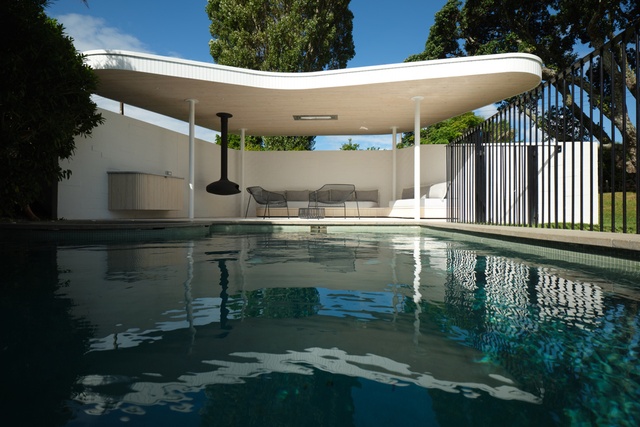
JR: You are currently at Stevens Lawson Architects, a practice that has recently been celebrated with a Te Kāhui Whaihanga NZIA Gold Medal. What is it like to be part of a team of award-winning architects?
KB: I’ve worked for Nick and Gary for four years now. They have an impressive mix of clients and a meticulous approach to design. It’s incredible that HomeGround Auckland City Mission and a $10-million house can exist within one office, and that these projects feel complimentary rather than at odds with each other. Ideas get tested and refined in high-end houses, then simplified into beautiful spaces and injected into the social/affordable projects.
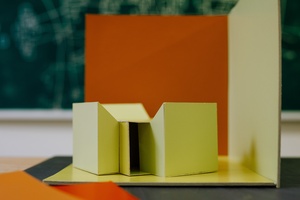
JR: Lastly, tell me about the inspiration behind your Resene moodboard and colour selection?
KB: Since I moved to Morningside last year, I’ve been running through Western Springs Lakeside Park and enjoying watching the leaves changing through the seasons. At the moment, I’m very drawn to weird yellows: the yellow-green of young leaves in spring, and the brown-yellows as they atrophy in autumn. My model is (very) loosely based on the toilet block in this park, which is a great little building. The yellows I used for this model are Resene Funk, Resene Gorse and Resene Spring Fever.
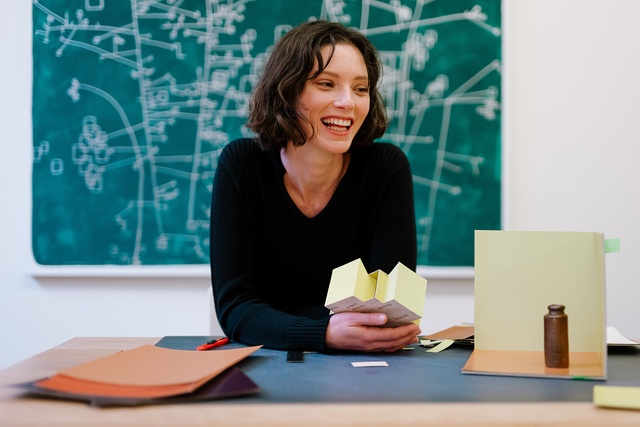
See more from the On The Rise series here.

